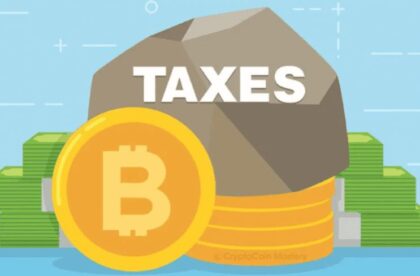Everything You Need To Know About UIF in South Africa
 2020 saw a lot of jobs lost across the world. South Africa was no better, with many businesses especially in the service industry forced to shut down by the pandemic and subsequent lockdowns.
2020 saw a lot of jobs lost across the world. South Africa was no better, with many businesses especially in the service industry forced to shut down by the pandemic and subsequent lockdowns.
Losing a job is anybody’s worst nightmare, particularly in times like these where many of us have little to no savings.
South Africa is one of the privileged ones in the world, in that there is a mechanism to help its citizens sustain themselves in such times.
The program is called the Unemployment Insurance Fund (UIF) and is ran by the Department of Employment and Labour.
Basically, the thinking is that if your employer terminates your services, you can apply to the UIF for benefits to take you through that rough patch.
Who qualifies for UIF in South Africa?
Obviously you have to be a South African worker.
The fund is however only available to those who had been making regular contributions during their employment. You cannot simply register for benefits after your termination.
UIF is open to workers who have been terminated, or who the Commission for Conciliation, Mediation and Arbitration (CCMA) considers their resignation as a constructive dismissal.
Workers whose resignation does not fall into that category do not qualify, and so do those who have been suspended or absconded from work.
The fund is also available to those who cannot work maybe due to illness, maternity or paternity leave etc.
Those who seek to receive UIF benefits must first register as a work seeker. They are then advised to apply for the benefits as soon as they become unemployed, but not later than 6 months after termination.
How long can you claim your UIF in South Africa?
The maximum months you can claim your UIF benefits is 12 months.
However, how long you receive the benefits is determined by how long you have been contributing.
As the formula goes; As a contributor, for every 4 days you work, you receive 1 day credit.
That means to qualify for the maximum 12 months of benefits, you must have worked and contributed for at least 4 years.
How much are UIF contributions in South Africa?
As mentioned, UIF is only available to those who make monthly contributions. You cannot start your contributions after you are terminated, and expect any benefits.
Basically, the employer pays unemployment insurance contributions of 2% of the worker’s salary. This is split of 1% employer contribution and 1% employee contribution.
In a hypothetical situation where one earns R10,000, the total contribution will be R200, split half way between the employer and the employee. (i.e. Employer’s contribution is not deducted from your salary).
This contribution must be paid by the employer to UIF or South African Revenue Services (SARS) before the 7th day of each month.
How much do you get for UIF in South Africa?
Obviously there is no one figure for everyone.
How much every individual receives is based on how much salary they were earning, and thus how much contributions they were making.
However, the rates of benefits between low income and high income earners is different, with the former favoured.
Also, perhaps to discourage freeloading, the rate decreases the longer you stay unemployed.
For the first 238 credit days, the benefits are 38% – 60% of your salary, depending on income level.
From the 239th day to the 365th day, there is a flat rate of 20% for all income levels. There are no benefits after 12 months.
It is also good to note that UIF has an earnings ceiling or limit.
Since 2012, the maximum earnings ceiling is R14,872 per month or R178,464 annually. For employees who earn more than this amount, the contribution is calculated using the maximum earnings ceiling amount.
Is UIF calculated on gross or net salary?
This is not the best news for employees, but UIF is part of the deductions.
It is therefore calculated on the gross salary, and not on what remains after the rest of the deductions.
How to Claim your UIF in South Africa
1. Unemployed worker must first register as a work seeker.
2. You should then apply at your nearest labour centre in person.
3. Take with you the following documents:
* 13-digit bar-coded ID or passport;
* form UI-2.8 for banking details;
* form UI-19 to show that you are no longer working for your employer
* proof of registration as a work-seeker.
4. Follow the advise of the staff at the labour centre.
Can you claim your UIF Online?
Yes you can. Employees can log into the Ufiling portal and apply.
The process is basically the same as the physical one, in that you will need to confirm your banking details, confirm that you are a work seeker etc.
You may however have to make an in-person appearance to collect documents or to confirm that you are still unemployed.
The same portal can be used by employers to make the monthly contributions.
How long does UIF take to pay out after signing?
After application, a process which can take several hours at the labour offices, you can expect your first payment within 2 to 4 days. However, if your employment details are not up-to-date, it may take longer to finalize the claim.
For subsequent payments, the payment should not take more than 10 days after signing the continuation of payment documents. This period is used to verify that the claimant is indeed still unemployed.
To follow up on your claim, e.g. when it is delayed, you can always call the Labour Centre where the claim was submitted or UIF Call centre on 0800 843 843.
What to do if your UIF application is rejected.
If you believe that your UIF application was unfairly rejected, you can appeal the decision of the Commissioner, or Claims Officer by sending the UI-12 form to your nearest Labour Centre.
Attach any document or proof that supports your belief.



